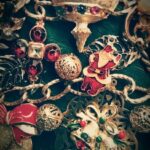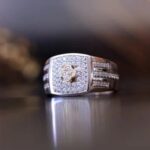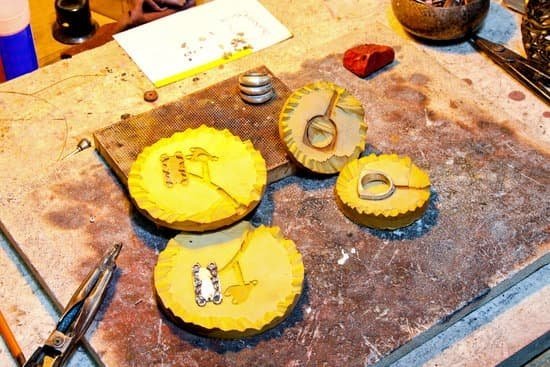Uncut diamonds have been gaining popularity in the jewelry industry due to their unique beauty and charm. These natural, untouched gemstones offer a raw and authentic appeal that many find captivating. However, when it comes to measuring and valuing uncut diamonds, there are certain factors that need to be taken into consideration.
In this article, we will delve into the world of uncut diamonds and explore how they are measured and valued in the market. We will discuss the various quality factors that influence their worth, such as color, cut, clarity, and carat weight. Additionally, we will examine the different methods used to measure the carat weight of uncut diamonds and compare traditional scales with modern digital measurements.
One key factor that significantly impacts the value of uncut diamonds is their cut. The way a diamond is cut can greatly enhance its brilliance and sparkle, making it more desirable in the eyes of buyers. We will delve into the importance of diamond cut in assessing the value of uncut diamonds.
Overall, this introductory section aims to provide readers with an understanding of why measuring and valuing uncut diamonds is crucial in the jewelry industry. By exploring these aspects, we hope to unveil the mysteries behind these exquisite gemstones and encourage readers to appreciate their unique beauty and value.
The Quality Factors for Uncut Diamonds
When it comes to measuring and valuing uncut diamonds, there are several key factors to consider. These factors, known as the four Cs of diamond grading, include color, cut, clarity, and carat weight. Understanding how each of these factors contributes to the value of uncut diamonds is crucial for both buyers and sellers in the jewelry industry.
Color is one of the most significant factors when evaluating uncut diamonds. The Gemological Institute of America (GIA) grades diamond color on a scale ranging from D (colorless) to Z (light yellow or brown). In general, the more colorless a diamond appears, the more valuable it is considered. However, some fancy colored uncut diamonds can also be highly sought after and valuable.
Cut refers to how well a diamond has been shaped and faceted from its rough state. While cut is often associated with finished gemstones, it also plays a role in determining the value of uncut diamonds. The quality of the cut directly affects how light interacts with the diamond, ultimately determining its brilliance and sparkle. A well-cut uncut diamond will maximize its beauty and therefore command a higher value.
Clarity assesses the presence of internal and external flaws within a diamond. Uncut diamonds can have various types of imperfections such as inclusions (internal flaws) or blemishes (external flaws). The GIA grades clarity on a scale ranging from Flawless (no visible imperfections under 10x magnification) to Included (obvious imperfections visible to the naked eye). Generally, uncut diamonds with higher clarity grades are more valuable due to their rarity.
Carat weight measures the size of an uncut diamond based on its weight. One carat is equal to 200 milligrams or 0.2 grams. It’s important to note that carat weight alone does not determine an uncut diamond’s value. Other quality factors, such as color and clarity, must also be taken into account. The carat weight of an uncut diamond influences its value: the larger the diamond, the higher its price per carat may be.
| Quality Factor | Description |
|---|---|
| Color | Ranging from D (colorless) to Z (light yellow or brown), with colorless diamonds being more valuable. |
| Cut | Determines how well a diamond interacts with light, affecting its brilliance and sparkle. |
| Clarity | Graded based on the presence of internal and external flaws, with higher clarity indicating fewer imperfections. |
| Carat Weight | The size of an uncut diamond measured by weight, with larger stones generally having a higher price per carat. |
Measuring the Carat Weight of Uncut Diamonds
Carat weight is one of the four essential factors when it comes to grading and valuing diamonds, including uncut diamonds. Carat weight refers to the size or mass of a diamond, and it plays a significant role in determining its value. In this section, we will delve into the different methods used to measure the carat weight of uncut diamonds and compare traditional scales with modern digital measurements.
Traditional Scales
One common method used to measure the carat weight of uncut diamonds is through traditional scales. These scales are specifically designed to precisely measure the weight of gemstones, including uncut diamonds.
Jewelers use a precision balance beam scale that can accurately determine the carat weight by measuring the relative difference in suspension points caused by placing the diamond on one side and using calibrated weights on the other side. Traditional scales are known for their accuracy and have been widely used for many years in diamond grading laboratories.
Modern Digital Measurements
With advancements in technology, digital measurements have emerged as another option for determining the carat weight of uncut diamonds. These digital devices use high-precision sensors and advanced algorithms to provide accurate readings quickly. Some handheld devices even allow jewelers to measure loose uncut diamonds without having to remove them from their settings. Digital measurements offer convenience, speed, and precision, making them popular among jewelers who want efficient ways to evaluate diamond weight.
It’s important to note that while measuring carat weight is crucial in understanding an uncut diamond’s overall value, it should not be considered in isolation. The other three Cs – color, cut, clarity – also significantly influence a diamond’s worth. Therefore, a comprehensive evaluation that considers all these factors is necessary when determining the true value of an uncut diamond based on its carat weight alone may provide an incomplete picture.
The Impact of Diamond Cut on Value
The cut of a diamond plays a significant role in determining its value, even when it comes to uncut diamonds. The cut refers to how well the rough stone has been shaped and faceted to enhance its brilliance and sparkle. While uncut diamonds may not have the traditional facets seen in polished diamonds, the way they are proportioned and shaped still greatly impacts their value.
When assessing the value of uncut diamonds based on their cut, experts look for certain factors. These include the overall shape of the stone, such as whether it is elongated or more rounded. The symmetry of the rough diamond is also important, as any significant irregularities can affect its appearance and reflectivity.
Another factor considered is the presence of natural cleavage planes within the rough diamond. These are areas where the crystal structure may be weaker, potentially leading to breakage during cutting and polishing. A piece with fewer cleavages or those that can be minimized during cutting will typically command a higher value.
In addition to these physical factors, experts also consider how well a particular cut showcases the unique characteristics and potential beauty of each individual uncut diamond. Some cuts may enhance color or clarity while others may prioritize maximizing brilliance and sparkle. Ultimately, it is important to strike a balance between preserving as much weight as possible from the rough diamond while still achieving an appealing final result.
Evaluating Diamond Color in Uncut Stones
Diamond color is one of the key factors that determine the value and desirability of both cut and uncut diamonds. While color grading is typically associated with polished, finished diamonds, it also plays a crucial role in evaluating uncut stones.
When assessing diamond color, experts use a standardized grading scale developed by the Gemological Institute of America (GIA). The GIA color grading scale ranges from D (colorless) to Z (light yellow or brown), with each grade representing a different level of color intensity. For uncut diamonds, the evaluation process involves closely examining the entire stone to detect any colors or tints that might affect its value.
In uncut diamonds, the presence of trace elements or structural defects can influence their color. Different hues and tones may be present in these gems, ranging from ice white to various shades of yellow, gray, or even other rare colors such as blue and pink. While some colored uncut diamonds are highly sought after for their unique beauty, others may be less valuable due to less desirable hues or intensities.
Taking all these factors into consideration when evaluating diamond color in uncut stones allows industry professionals to assign an appropriate grade that reflects their overall appeal and value. Additionally, it is important to note that personal preference can also influence the perceived beauty and worth of diamond color. Some individuals may prefer warmer hues while others find pure white more desirable. Therefore, understanding individual taste along with industry standards is crucial when valuing uncut diamonds based on their color.
| GIA Color Grade | Description |
|---|---|
| D-F | Colorless |
| G-I | Near Colorless |
| J-K | Faint Yellow |
| L-M | Very Light Yellow |
| N-Z | Light Yellow or Brown |
The Importance of Clarity in Uncut Diamonds
Understanding the Clarity Grading System for Uncut Diamonds
When it comes to evaluating the value of uncut diamonds, clarity plays a crucial role. The clarity of a diamond refers to the presence (or absence) of internal and external flaws, known as inclusions and blemishes, respectively. These imperfections can affect a diamond’s brilliance and overall appearance, thus influencing its value.
To assess the clarity of uncut diamonds, a specific grading system is used. Unlike traditional cut diamonds, uncut diamonds have their own unique set of criteria for clarity evaluation. The Gemological Institute of America (GIA) has developed such a system to accurately assess these gemstones.
The GIA grading scale for uncut diamond clarity ranges from Flawless (FL), meaning no inclusions or blemishes visible under 10x magnification, to Included (I), where inclusions are easily visible without magnification. The scale includes six categories: Flawless/Internally Flawless (IF), Very Very Slightly Included (VVS1 and VVS2), Very Slightly Included (VS1 and VS2), Slightly Included (SI1 and SI2), and Included (I1, I2, and I3). Each category represents different levels of visibility and impact on value.
The Impact of Clarity on Diamond Value
Uncut diamonds with higher levels of clarity tend to have higher values because of their rarity. When a diamond has few to no inclusions or blemishes, light can pass through more freely and create better brilliance and sparkle. This enhanced beauty makes high-clarity uncut diamonds more desirable among consumers and collectors.
However, it is important to note that not all inclusions or blemishes negatively affect a diamond’s beauty or durability. Some may be negligible or even considered unique characteristics that enhance its individuality. Ultimately, the impact of clarity on value depends on the size, type, and location of the imperfections.
Considering Clarity when Valuing Uncut Diamonds
When evaluating the value of uncut diamonds based on clarity, it is crucial to consider factors such as size and visibility. Larger or more obvious inclusions may significantly affect a diamond’s value, while smaller or less visible ones may have a minimal impact. Additionally, considering the overall beauty and rarity of an uncut diamond can also influence its worth.
By understanding the importance of clarity in uncut diamonds and how it contributes to their value, consumers can make informed decisions when purchasing or selling these unique gemstones. It is essential to consult with certified gemologists or experts who can accurately evaluate the clarity grade and provide a comprehensive assessment of an uncut diamond’s true worth.
Assessing the Value of Uncut Diamonds
When it comes to determining the value of uncut diamonds, there are several market considerations that play a significant role. These factors, which contribute to the price of uncut diamonds in the market, can help both buyers and sellers understand how these unique gemstones are valued.
One important factor is supply and demand. The availability of uncut diamonds can greatly affect their value. If there is a high demand for uncut diamonds but a limited supply, prices are likely to increase.
On the other hand, if there is an abundance of uncut diamonds in the market with less demand, prices may decrease. The rarity of certain types and sizes of uncut diamonds also influences their value. Rare and unique specimens are often sought after by collectors and can command higher prices.
Another key consideration is market trends. Like any other commodity or investment, the value of uncut diamonds can be influenced by fluctuations in the market. Factors such as economic conditions, global events, and changing tastes in jewelry can all impact the demand for uncut diamonds and subsequently affect their pricing. It’s important for those interested in buying or selling uncut diamonds to stay informed about current trends in order to make informed decisions.
Lastly, one must consider the reputation and credibility of sellers when assessing the value of uncut diamonds. Trustworthy sellers who have established themselves in the diamond industry are more likely to offer accurate valuations based on market considerations and industry standards.
The Role of Jewelry Notes in Valuing Uncut Diamonds
Jewelry notes play a crucial role in valuing uncut diamonds. These notes contain detailed information about the specific characteristics and qualities of the diamond, which helps determine its value in the market. When it comes to assessing and establishing the worth of an uncut diamond, jewelry notes provide valuable insight into its origin, history, and unique features.
One important aspect of jewelry notes is providing information about the diamond’s certification. An uncut diamond that has been certified by a reputable gemological laboratory holds more value because it assures buyers of its authenticity and quality. The jewelry note may include details about the certification authority, such as GIA (Gemological Institute of America) or AGS (American Gem Society), along with the specific report number for reference.
Another critical factor documented in jewelry notes is the diamond’s provenance. Knowing where the uncut diamond originated from can impact its value significantly. For instance, diamonds that come from certain regions like South Africa or Australia may have a higher desirability due to their reputation for producing high-quality stones.
Additionally, jewelry notes often highlight any unique characteristics or special features of an uncut diamond. This could include rare color variants, exceptional clarity, or distinctive shape proportions. Such distinguishing attributes contribute to the overall value of the stone, making it more sought after by collectors and connoisseurs.
Conclusion
In conclusion, the process of measuring and valuing uncut diamonds is complex and multifaceted. By considering the four Cs – color, cut, clarity, and carat weight – jewelers are able to determine the value of these unique gemstones. Measuring the carat weight involves using traditional scales or modern digital measurements, while the diamond cut significantly impacts its brilliance and sparkle.
Evaluating diamond color is crucial in determining value, as different hues and tones can influence it greatly. Lastly, clarity plays a significant role in uncut diamonds’ value, with internal and external flaws affecting their worth.
When assessing the value of uncut diamonds in the market, numerous factors come into play. Supply and demand dynamics, rarity of specific uncut diamonds, and prevalent market trends all contribute to their pricing. Additionally, jewelry notes serve as an essential tool for evaluating and establishing the value of uncut diamonds. These notes provide crucial information about the gemstone’s uniqueness, history, and any exceptional qualities that may further enhance its worth.
In concluding this article, it is important to appreciate the beauty and value of uncut diamonds. Their rising popularity in the jewelry industry is evident due to their distinctive allure and individuality.
Understanding how these gems are measured and valued unlocks a world filled with mysteries waiting to be explored and appreciated by both industry professionals and enthusiasts alike. With each uncut diamond possessing its own story within its intricate facets, we encourage readers to delve deeper into this fascinating realm of precious gemstones.
Frequently Asked Questions
How are uncut diamonds priced?
Uncut diamonds, also known as rough diamonds, are priced based on several factors. The first and most important is the size or weight of the diamond, usually measured in carats. Larger rough diamonds tend to be more valuable than smaller ones due to their rarity. Another significant factor is the quality of the diamond’s color and clarity.
Diamonds with vibrant colors and higher clarity levels are generally more sought after and command higher prices. Additionally, the shape and overall appearance of the rough diamond can influence its price. Certain shapes, such as octahedrons or cubes, may have more market demand than irregularly shaped rough diamonds.
How do you grade uncut diamonds?
Grading uncut diamonds involves assessing various characteristics that determine their quality and value. The four main criteria for grading rough diamonds are known as the “Four Cs”: color, clarity, carat weight, and cut (shape). To grade color in rough diamonds, gemologists examine the stone’s natural hue and intensity; stones with less noticeable color tend to be of higher value.
Clarity grading assesses any internal or external flaws in the diamond that may affect its brilliance or strength. Carat weight measures how heavy the rough diamond is since this impacts rarity and pricing too. Lastly, while cut primarily refers to the shape a polished diamond will take from a rough stone, it can also indicate how well a piece will retain its carat weight during cutting.
Does uncut diamonds have resale value?
Yes, uncut diamonds do have resale value within certain markets or circles involving jewelers, manufacturers, and specialized collectors who work with rough diamonds. However, it should be noted that selling uncut diamonds requires expertise in assessing their potential for cutting and polishing into valuable gemstones later on.
The resale value heavily relies on considerations such as carat weight, shape suitability for various markets (e.g., whether it can yield desirable polished shapes), projected color after cutting/processing, estimated clarity results post-cutting (based on internal features), and the current supply-demand dynamics of the industry. An uncut diamond’s value can increase significantly after being transformed into a polished gemstone.

Welcome to my jewelry blog! My name is Sarah and I am the owner of this blog.
I love making jewelry and sharing my creations with others.
So whether you’re someone who loves wearing jewelry yourself or simply enjoys learning about it, be sure to check out my blog for insightful posts on everything related to this exciting topic!





